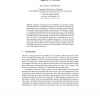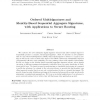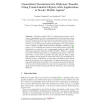216 search results - page 30 / 44 » Formal Proofs for the Security of Signcryption |
ESOP
2005
Springer
14 years 1 months ago
2005
Springer
Electronic voting promises the possibility of a convenient, efficient and secure facility for recording and tallying votes in an election. Recently highlighted inadequacies of imp...
CCS
2007
ACM
14 years 1 months ago
2007
ACM
We construct two new multiparty digital signature schemes that allow multiple signers to sequentially produce a compact, fixed-length signature. First, we introduce a new primiti...
FC
2008
Springer
13 years 9 months ago
2008
Springer
Oblivious transfer (OT) is a fundamental primitive used in many cryptographic protocols, including general secure function evaluation (SFE) protocols. However, interaction is a pri...
CRYPTO
2003
Springer
14 years 21 days ago
2003
Springer
Can you guarantee secrecy even if an adversary can eavesdrop on your brain? We consider the problem of protecting privacy in circuits, when faced with an adversary that can access ...
GECCO
2008
Springer
13 years 8 months ago
2008
Springer
In the early days a policy was a set of simple rules with a clear intuitive motivation that could be formalised to good effect. However the world is becoming much more complex. S...



